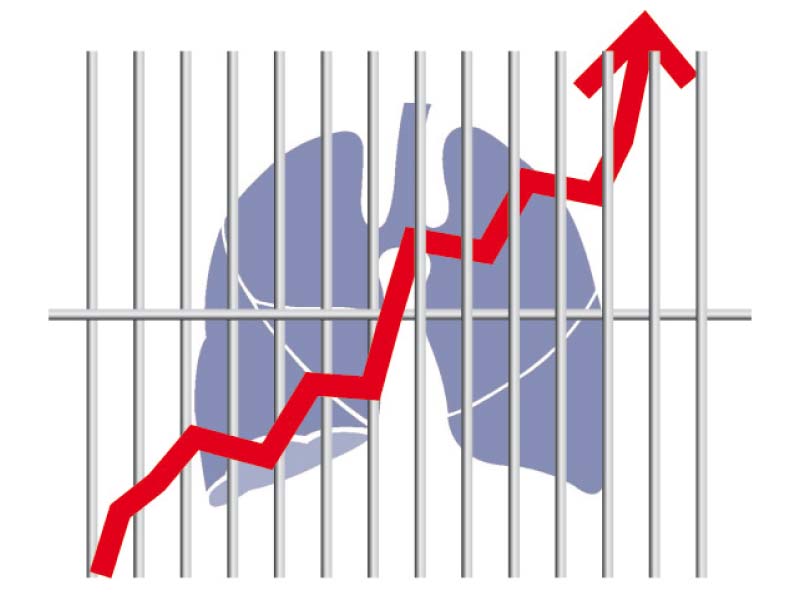
LAHORE: The six-month data of Punjab Health Department on tuberculosis (TB) has set alarm bells ringing as at least 26,017 patients have been registered from across the province. Unfortunately, not much is being done to eradicate the disease of the poor — another name for TB.
“The situation is far worse than the recorded figures,” says Dr Nasarullah, a senior pulmonologist at Mayo Hospital, while talking to The Express Tribune.
Muhammad Akram, 55, was diagnosed with TB a month ago when he finally visited Mayo. He developed the symptoms much earlier but was not diagnosed properly because of the incompetent medical practitioners in his neighbourhood
He lies in a bed of Mayo Hospital with his wife sitting beside him. The woman is not wearing a mask, neither has she been advised to do so – a necessary precaution considering the disease is contagious.
Akram from Shahdara – an old neighbourhood of the provincial metropolis – was working for the government. “Although my job did not pay well, I managed to own a small abode by saving some money,” he said. “I was living in a decent setting.”
But he saw his world breaking down when he was diagnosed with TB. “Now I’m lying on a bed without a job,” he added. “I can do nothing for the next eight months at least.”
Akram has to spend the eight months inside his home while taking all the prescribed medicines as he is more prone to develop multidrug-resistant TB owing to his deteriorated health condition.
He recalls that he visited the doctor in his locality when he first lost his appetite. “The doctor said I had fever, after two weeks I went to another doctor who diagnosed me with typhoid, but none of them recommended me tests for TB.”
As he faces consequences of delayed treatment, Akram suggested the government establish small laboratories in rural areas and other underprivileged areas especially for TB tests to save people. Quacks are another reason behind the spread of the disease as they misguide patients. In Lahore alone, about 30,000 quacks are working in different areas.
Closer to the bacteria
TB is most common among people belonging to lower income groups as they mostly live in closed environments under unhygienic circumstances.
The head of the provincial TB control programme in Punjab, Dr Amir, says people can be affected by TB within an eight-foot radius. Countries in the West have managed to eradicate the disease by constructing open housing societies and developing green areas in towns for fresh air.
According to Dr Nasarullah, Pakistan ranks sixth among the 22 countries heavy with the burden of TB as most of the country’s population lives below the poverty line. He said around 43,000 people, including 18,000 children contract TB every year.
Disease of the poor
TB is a bacterial infection spread through inhaling tiny droplets from the coughs or sneezes of an infected person. “It is a critical condition but can be cured with proper treatment,” says Nasarullah.
TB mainly affects the lungs and symptoms arise like fever, loss of appetite, weight loss, cough, abdominal pain, diarrhoea, unconsciousness and headache. “When a person develops active TB disease, the symptoms may be mild for many months. This can lead to delays in seeking care, and results in transmission of the bacteria to others,” Nasarullah says.
To a question about the development of multidrug-resistant TB (MDR-TB), he said Pakistan was estimated to have the fourth highest prevalence of MDR-TB, which is primarily caused by inappropriate treatment or incorrect use of anti-TB drugs or use of poor quality medicines.
“Standard anti-TB drugs have been used for decades. In Pakistan, single anti-TB drugs are not available, except for being in combination,” he maintained. “So people who develop TB with other diseases like diabetes, liver failure, heart diseases, kidney failure and blood pressure are common victims of MDR-TB.”
Unfortunately in Pakistan, he added, TB drugs are not available for split therapy. “In my career, I have not seen any single anti-drug tablet,” he said. “Although these are available in combination, but to refrain from any side effects, these medicines should be available otherwise MDR-TB symptoms develop.”
He pointed out that TB cure case will last for at least eight months, but if the patient leaves the course, definitely MDRTB symptoms develop further.
Published in The Express Tribune, December 19th, 2016.















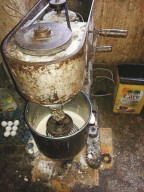
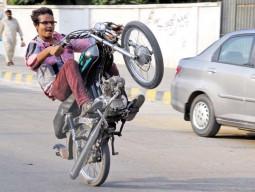
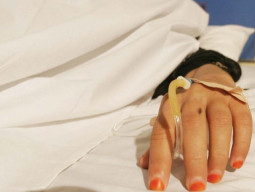


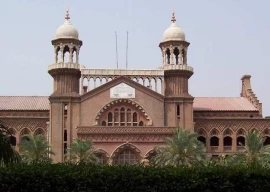
















COMMENTS
Comments are moderated and generally will be posted if they are on-topic and not abusive.
For more information, please see our Comments FAQ